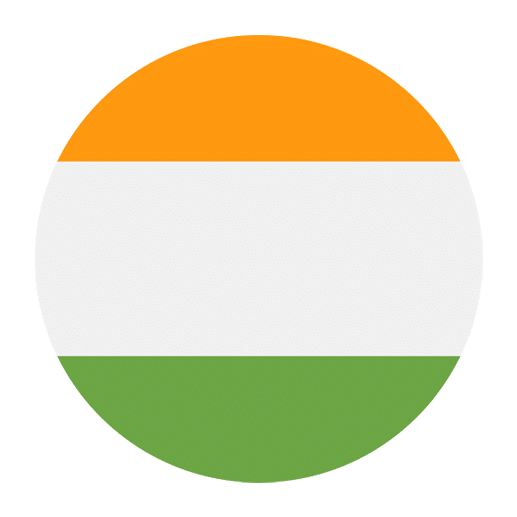When beginning the journey of learning a new language, immersing oneself in literature can be both a rewarding and effective method. For English speakers looking to learn Kannada, one of the major languages spoken in the Indian state of Karnataka, reading books specifically designed for beginners can significantly enhance your vocabulary, comprehension, and cultural understanding. Kannada, with its rich literary tradition, offers a plethora of books that cater to novice readers. In this article, we will explore some of the top Kannada books for beginners, providing you with a curated list that will help you navigate your way through the language learning process with ease.
Why Reading Kannada Books is Beneficial
Reading books in Kannada will not only help you learn new words and phrases but also give you a deeper understanding of the cultural context in which the language is used. Here are some key benefits:
1. Vocabulary Building: Books introduce you to new words and phrases in a natural context, helping you remember them better.
2. Understanding Grammar: Reading sentences and paragraphs allows you to see grammar rules in action.
3. Cultural Insight: Literature often provides a window into the culture, traditions, and everyday life of native speakers.
4. Improved Comprehension: Regular reading helps improve overall language comprehension and fluency.
Top Kannada Books for Beginners
1. “Chinnara Chilipili” by Dr. Chidambara Rao Jambe
“Chinnara Chilipili” is a delightful collection of short stories aimed at children but is highly beneficial for beginners of Kannada. The language used is simple and the stories are engaging, making it easier for learners to follow along. The illustrations in the book also provide visual context, aiding in understanding the storyline and vocabulary.
2. “Balondu Bhavageethe” by G. P. Rajarathnam
This book is a collection of poems specifically written for children but is equally useful for adult learners. The poems are short, rhythmic, and use simple language, making them perfect for beginners. Reading poetry can be particularly beneficial as it often employs repetition and rhyme, which can help in memorizing new words and phrases.
3. “Kuvempu’s Selections for Children”
Kuvempu, a renowned Kannada writer and poet, has written extensively for children. His selections for young readers are filled with simple yet profound stories and poems that are ideal for beginners. These works often incorporate moral lessons and cultural themes, providing a deeper understanding of Kannada heritage.
4. “Punyakoti” by A. N. Krishna Rao
“Punyakoti” is a popular Kannada folk tale that has been retold in various formats, including books for children. The story revolves around a truthful cow named Punyakoti, and its simple narrative and repetitive language make it an excellent choice for beginners. It also introduces learners to traditional Kannada folklore.
5. “Hakki Mattu Kage” by K. Shivaram Karanth
This is a collection of fables and animal stories written by the Jnanpith award-winning author K. Shivaram Karanth. The language is straightforward, and the stories are short, making them perfect for those who are just starting with Kannada. The book also provides a cultural context, helping learners understand the societal norms and values of Karnataka.
6. “Nanna Kanasina Bharat” by Dr. Rajkumar
Dr. Rajkumar, a legendary figure in Kannada cinema, wrote this book to inspire young minds. “Nanna Kanasina Bharat” (My Dream India) is written in simple, easy-to-understand Kannada and is ideal for beginners. The book covers various aspects of Indian culture and history, providing a dual benefit of language learning and cultural education.
7. “Chinnari Muththina Sippe” by Sudha Murthy
Sudha Murthy, a prolific writer and philanthropist, has penned several books for children that are also suitable for beginner Kannada learners. “Chinnari Muththina Sippe” is a collection of short stories that are simple, engaging, and filled with moral lessons. Sudha Murthy’s clear and straightforward writing style makes her books an excellent resource for language learners.
How to Make the Most of Your Reading
To maximize the benefits of reading Kannada books, consider the following tips:
1. Start Slow: Begin with children’s books or short stories that use simple language. Gradually move on to more complex texts.
2. Use a Dictionary: Keep a Kannada-English dictionary handy to look up unfamiliar words. This will help you expand your vocabulary.
3. Take Notes: Write down new words and phrases along with their meanings. Review these notes regularly.
4. Practice Speaking: Try to use new words and phrases in your daily conversations. This will help reinforce your learning.
5. Join a Reading Group: Consider joining a Kannada reading group or book club. Discussing books with others can provide additional insights and improve your comprehension.
6. Re-read: Don’t hesitate to read the same book multiple times. Repetition will help solidify your understanding and memory of new words and phrases.
Online Resources and E-books
In addition to physical books, several online resources and e-books are available for beginner Kannada learners. Websites such as Amazon, Google Books, and regional online bookstores offer a wide range of Kannada literature. Many of these platforms also provide sample chapters, allowing you to preview the content before making a purchase.
1. Kannada eBooks
Several websites offer Kannada eBooks that can be read on various devices. These eBooks often come with interactive features such as audio pronunciations, making them ideal for beginners. Some popular platforms for Kannada eBooks include:
i. Amazon Kindle: Amazon offers a wide range of Kannada eBooks that can be downloaded and read on Kindle devices or the Kindle app.
ii. Google Play Books: Google Play Books has a selection of Kannada titles that can be read on smartphones, tablets, or computers.
iii. Scribd: Scribd is a subscription-based service that offers access to a variety of Kannada books, including those suitable for beginners.
2. Audiobooks
Audiobooks can be a great supplement to reading, especially for language learners. Listening to native speakers can improve your pronunciation and comprehension. Some platforms that offer Kannada audiobooks include:
i. Audible: Audible, an Amazon company, has a selection of Kannada audiobooks that can be downloaded and listened to on various devices.
ii. Storytel: Storytel is a subscription-based audiobook service that offers a range of Kannada titles, including those for beginners.
Conclusion
Embarking on the journey of learning Kannada through literature can be both enjoyable and educational. The books listed in this article are excellent starting points for beginners, offering simple language, engaging stories, and valuable cultural insights. By incorporating regular reading into your language learning routine, you can significantly enhance your vocabulary, comprehension, and overall proficiency in Kannada.
Remember to take your time, use additional resources such as dictionaries and audiobooks, and engage with the language as much as possible. Happy reading and happy learning!

